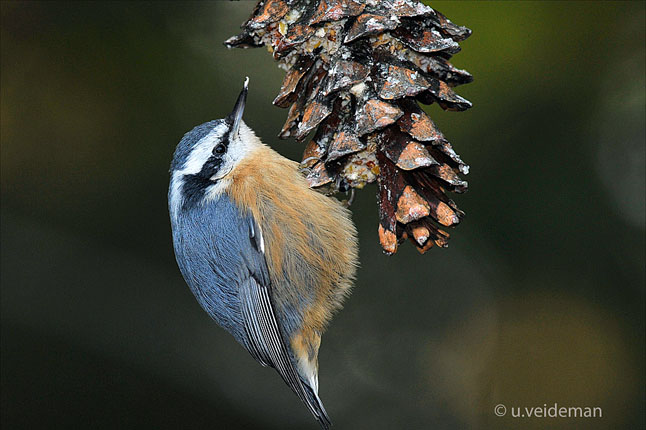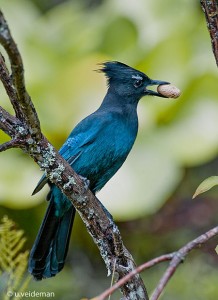
By Michael Morris
Twenty-four Revelstoke birders undertook our annual count of birds on December 19. The weather, always a factor in influencing the extent of bird activity, was mild, but layers of cloud dimmed the already feeble December sun, making the recognition colours difficult in the morning. However, the sky brightened by mid-day and we managed, as always, to find an interesting assortment of winter residents.
The count contributes to the continent-wide Christmas Bird Count coordinated by the National Audubon Society based in Washington D.C. It is the oldest and largest wildlife survey in the world. This year is the 110th such count. Last year about 60,000 persons took part in over 2,000 localities across North America, identifying over 65 million birds.

The count enables scientists to track large scale trends in bird populations. For example, last winter we found few seed eating birds like Pine Siskins on our local count, but the US east coast birders experienced large flocks of them. This year in Revelstoke we had record high numbers of Steller’s Jays and Red-breasted Nuthatches. By examining data on a larger scale, scientists can tell us the population trend for these species.
A recent Audubon study that used 40 years of bird count data showed that a majority of woodland bird species have shifted their areas of abundance north at a rate of about one mile per year. Studying weather data for the same period, these scientists attributed the change in habitat use by birds to a warming climate.
While I enjoy studying any aspect of ecology, birds are a favourite because, relative to other animals, they are easy to detect and identify. They can be found in any habitat and have a wide range of adaptations and strategies to compete within and among species. Here are the birds we found on this count:
Canada Goose 37, Mallard 135, Bufflehead 6, Common Goldeneye 71, Barrow’s Goldeneye 5, Common Merganser 8, Great Blue Heron 3, Bald Eagle 8, Golden Eagle 1, Rock Dove 16, Belted Kingfisher 2, Downy Woodpecker 4, Hairy Woodpecker 4, Northern Flicker 47, Pileated Woodpecker 1, Northern Shrike 1, Steller’s Jay 29, American Crow 66, Common Raven 320, Black-capped Chickadee 84, Mountain Chickadee 3, Chestnut-backed Chickadee 6, Red-breasted Nuthatch 51, White-breasted Nuthatch 1, American Dipper 7, Golden-crowned Kinglet 5, American Robin 30, Varied Thrush 1, European Starling 90, Bohemian Waxwing 1420, Cedar Waxwing 25, Song Sparrow 14, White-throated Sparrow 1, Harris’s Sparrow 1, Dark-eyed Junco 70, Red-winged Blackbird 28, Brewer’s Blackbird 9, Pine Grosbeak 1, Cassin’s Finch 4, Red Crossbill 36, Common Redpoll 1, Pine Siskin 4, American Goldfinch 220, Evening Grosbeak 21.
For more photos of local birds visit Dusty Veideman’s blog at http://www.papaveedy.blogspot.com
Michael Morris is the Revelstoke Christmas Bird Count Coordinator



